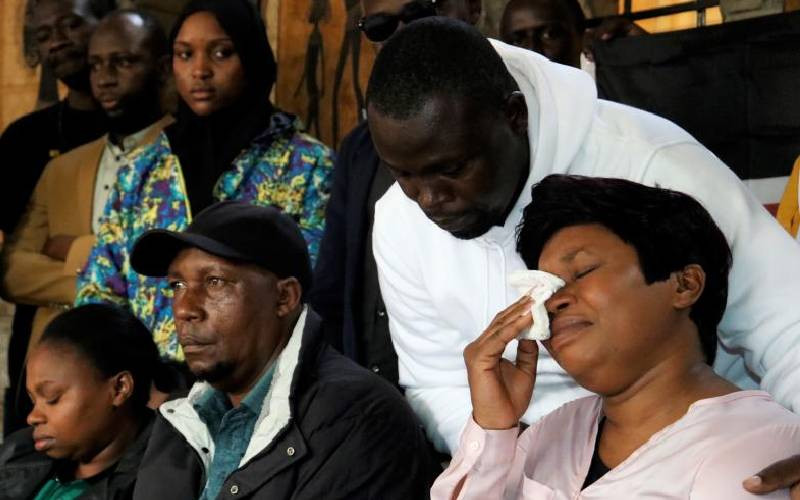
If you told the Paris Olympics organisers that their decision to hold the opening ceremony along the Seine River was a masterstroke of symbolism, they wouldn’t have needed convincing.
The Seine, the lifeblood of Paris and a witness to centuries of history, has always served as a stage for triumphs, transitions and farewells. It was here, on this historic river, that Janet Wanja, one of Kenya’s most beloved volleyball players, embarked on her final mission for Malkia Queens.
As part of the bench, Wanja represented the heart and soul of Kenyan volleyball — a career defined by resilience and a legacy that transcends the court.
The Seine has long been a silent witness to the climaxes of human endeavours. Not far from where this photo of Wanja was taken during the Olympics opening ceremony, stands the Conciergerie, the prison that held Marie-Antoinette before her fateful march to the guillotine. The Conciergerie is a haunting reminder that even the greats must face their final act.
Wanja’s presence at the Paris Olympics mirrors the historical gravitas of the Seine’s past. Her career, like Marie-Antoinette’s journey to the Conciergerie, reached a poignant culmination along this iconic river. For Wanja, this was not a prison but a platform—a chance to guide Malkia Queens, instill wisdom, and witness the world come together in celebration of sport.
History demonstrates her vital role in Kenya’s volleyball journey. At the 2000 Olympics in Sydney, the Kenya volleyball team achieved a historic milestone by winning their first-ever set at the Games. That team comprised the best Kenya had ever produced, including Mary Ayuma, Violet Barasa, Doris “Scud Thrower” Wefwafwa, Judith Serenge, Emily Wesutila, Jackline Makokha, Margaret Indakhala, and Dorcas Ndasaba.
However, for some players, it also marked the twilight of their careers. The Athens Olympics that followed four years later saw inclusion of a new generation of talent, with Janet Wanja, then in her early twenties, among the four players born in the 1980s. She symbolised transition to a new era of Kenyan volleyball.
Standing at 5’9, Wanja’s spike and block reached an impressive height of 110 inches—a testament to her athleticism and dominance on the court.
If you follow volleyball, the legendary Brazilian setter Helia Rogerio de Souza, popularly known by her nickname “Fofao” won Olympic gold in 2008. She stood at 5’8 with a similar vertical elevation as Wanja, showcasing the elite company our Wanja kept.
Wanja’s precision and court vision made her not just a reliable player but also an indispensable leader for the Malkia Queens.
As the team’s setter, she was like the mother who made sure children (read players) were fed, so they could go for the spikes and finish off the opponent. Much like the Seine, Wanja carried the weight of history. She was the bridge between Kenya’s volleyball past and its future, having inspired generations of players.
As we reflect on Janet Wanja’s life and legacy, the Seine’s enduring flow reminds us of the beauty and brevity of human achievement. It is a river that has seen the rise and fall of empires, the celebration of nations, and now, the quiet farewell of a Kenyan icon who gave everything for her sport.
May her soul rest in peace. Praying for grace, strength, and comfort for the family.
-The writer is co-founder of Joro Coffee
 The Standard Group Plc is a multi-media organization with investments in media platforms spanning newspaper print
operations, television, radio broadcasting, digital and online services. The Standard Group is recognized as a
leading multi-media house in Kenya with a key influence in matters of national and international interest.
The Standard Group Plc is a multi-media organization with investments in media platforms spanning newspaper print
operations, television, radio broadcasting, digital and online services. The Standard Group is recognized as a
leading multi-media house in Kenya with a key influence in matters of national and international interest.











